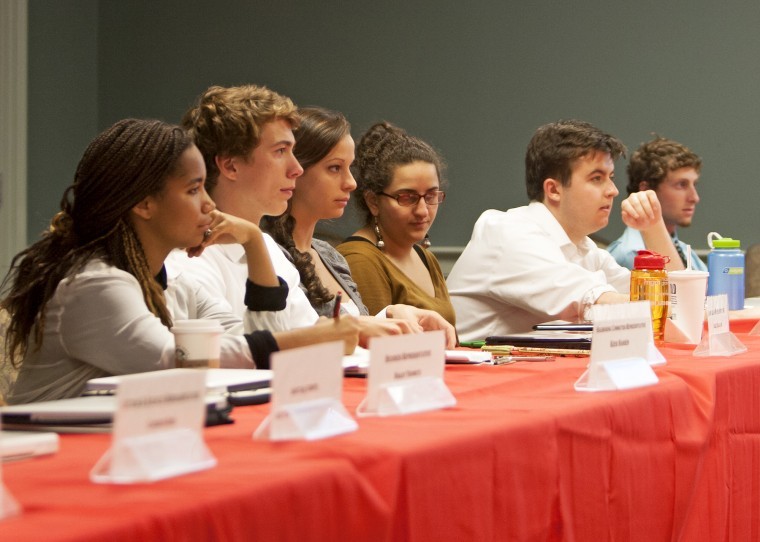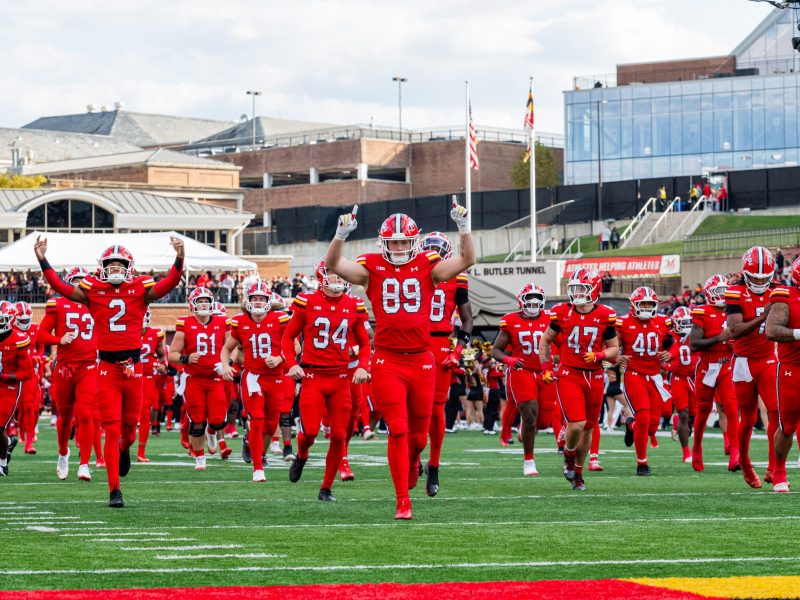
The Student Government Association, above in an October meeting, formed a committee this week to explore alternative methods for funding MaryPIRG. Students voted down funding the advocacy group’s two salaried positions last semester.
CORRECTION: Due to a reporting error, this story incorrectly identified Niloofar Bagheri Jebelli. The article has since been changed to reflect this correction.
A new SGA committee will explore alternative means of funding for MaryPIRG, after the student-run advocacy group lost its funding last spring.
After a short debate Wednesday night, the Student Government Association voted 22 to 2 in favor of creating an ad hoc committee to examine MaryPIRG’s options. The chapter has no available resources for the spring semester, jeopardizing the group’s functionality. In the past, the SGA granted MaryPIRG about $43,000, funneled from undergraduate students’ mandatory student activities fee, which the group used to support two salaried positions. However, students voted down funding those salaries on last spring’s SGA elections ballot, and the group received only about $1,000.
The Committee for the Exploration of MaryPIRG Funding Options will explore both long- and short-term possibilities for the organization, a student-directed, grassroots advocacy group.
“There have obviously been problems in the past, and this is a way to look at the entire situation and see if there’s a way to fix it and make it better for everybody,” said Samantha Zwerling, SGA president. “Make it better for the SGA, make it better for the student groups and hopefully rework the system so this isn’t a problem in the future.”
Last fall, MaryPIRG earned a $9,000 grant to reduce plastic water bottle consumption on the campus, according to MaryPIRG chapter chairwoman Lianne Berne, and last spring, it co-hosted a 400-person rally in Annapolis to promote offshore wind energy in the state. This fall, the group geared its efforts toward getting out the vote, helping the TerpsVote coalition register more than 4,000 students on the campus. But without funded salaried positions, MaryPIRG is unable to carry out its purpose of campaigning for the environment and college affordability and against poverty and homelessness, Berne said.
“I do believe that the current funding system cannot support the type of operation that MaryPIRG needs to run to continue to be as effective,” she said. “The thing that makes MaryPIRG so effective is that we hire a staff of organizers and advocates who research solutions to the problems we address, train students to effectively run these campaigns, and advocate full-time in Annapolis and D.C. on students’ behalf.”
However, several representatives said they disagreed with the legislation. Assigning the body’s resources to helping MaryPIRG survive would set a precedent for all student groups on the campus, said Ellicott Community representative Brandon DePalo; groups in need could reasonably expect the SGA to create an extensive plan to help them secure money.
“Why would we have a special group for MaryPIRG and no others?” DePalo said. “We can’t dedicate a special committee to every group. … It’s a dangerous precedent to set.”
Still, said behavioral and social sciences college representative Niloofar Bagheri Jebelli, it’s important for the SGA to help groups find solutions to their problems.
“This is not saying we’re going to give MaryPIRG the amount of money they wanted … it’s a committee to talk about it,” Jebelli said.
The SGA committee must present a report of its findings no later than Dec. 5.
At Wednesday’s meeting, the SGA also voted unanimously to encourage greater transparency from administrators regarding their work on the Climate Action Plan’s sustainability goals. Representatives plan to send a letter to university President Wallace Loh with the signatures of nearly 30 student groups on the campus explaining the importance of providing students with more clarity on how they plan to meet the targets in reducing carbon emission.
“We have a plan to encourage the administration to detail their plans for carbon reduction — it’s clear that we as students have a vested interest,” said BSOS representative Ryan Belcher.
While officials said they expect to meet the plan’s 2012 goal of reducing carbon emissions by 15 percent, using a base figure from 2008, students and professors have expressed doubt as to whether enough work has been done to cut carbon emissions by 25 percent by 2015. Under the American College and University Presidents’ Climate Commitment, signed in May 2007, this university should become carbon neutral by 2050.
“[Loh] cares about it — when Mote signed it, it wasn’t Dan Mote signing it as a person, it was on behalf of the university,” said Kate Richard, SGA’s sustainability director. “President Loh cares, and he’s not going to back out of this commitment.”



